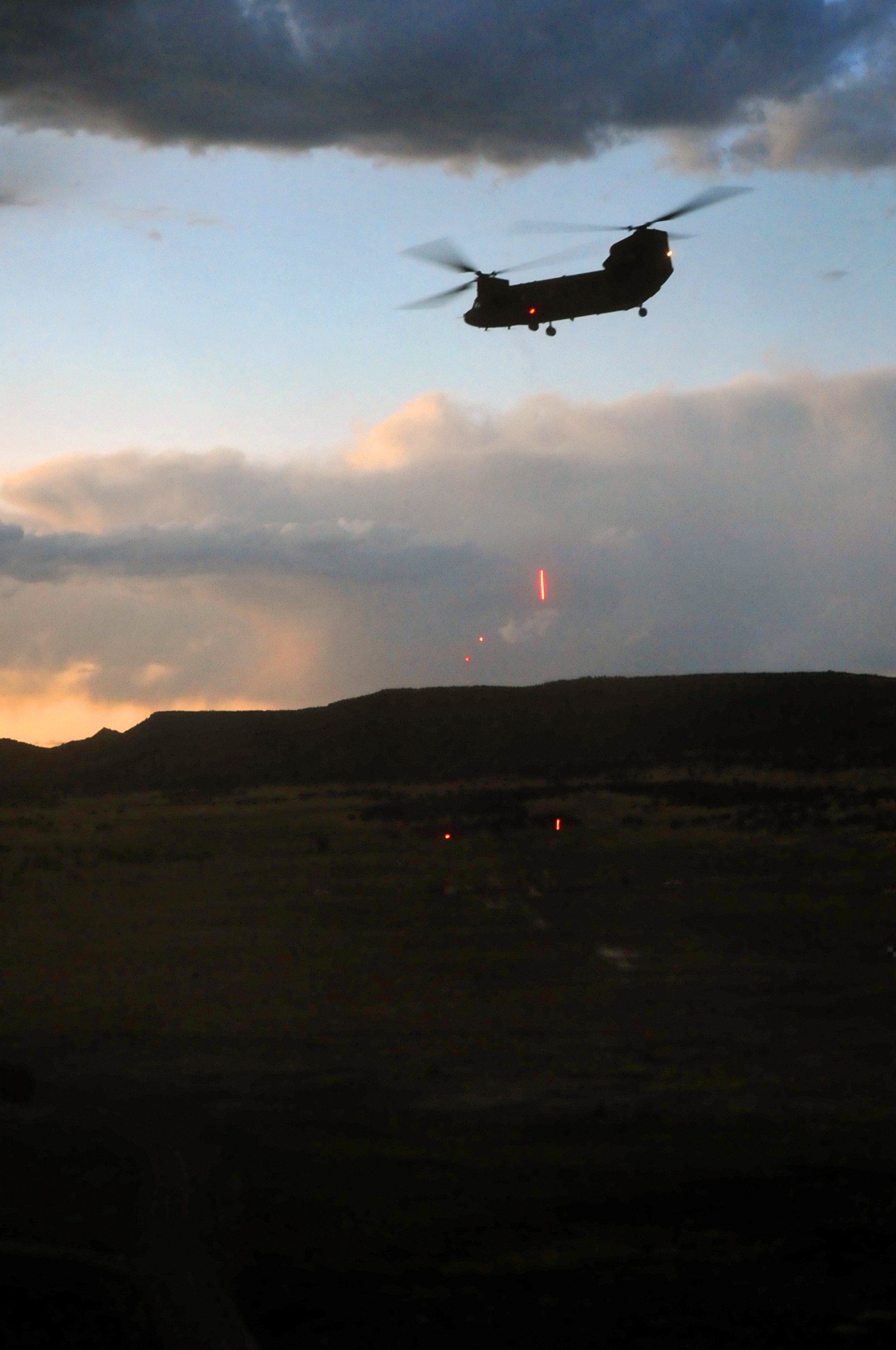FORT CARSON, Colo. (7/15/2009) - As the large helicopter crested the silhouette of the mountains at sunset, it slowly crept closer to the observation tower. Its rotors cutting the warm summer night air, the Chinook flew in a flight pattern between 50 and 100 feet above the deck, back and forth over Fort Carson's Aerial Gunnery Range laying down bursts of fire from an M240 machine gun. Red tracer rounds lit up the darkening sky, frequently igniting little bits of sage brush on the ground below that would extinguish by themselves within a matter of seconds.
Targets consisted of old dilapidated automobiles and wood-fabricated mock aircraft and buildings. At one point, a truck caught fire after it became hot from the sheer volume of 7.62mm rounds blasting through it. For several hours, the range received a constant pounding of heavy machine gun fire - all part of the Colorado and Nebraska National Guard's Company B, 2nd Battalion, 135th General Support Aviation's CH-47 Chinook helicopter aerial gunnery training.
"This is one of our high points for (annual training)," Flight Engineer Sgt. 1st Class Greg Riss said of the aerial gunnery portion of the training. "I love it."
Riss said between the two Chinooks that flew that night, 12 door gunners expended 22,000 rounds of 7.62 mm ammunition. Ten Soldiers from the Colorado side of the company took part in the exercise.
Rounds were fired from both helicopters in a static (grounded) position in the early evening while there was still daylight.As darkness crept in, one of the Chinooks made passes around the range with crewmembers firing the gun with their night vision goggles on. The targets on the ground have motion sensors on them that register when they've been hit.
Pilot Capt. Njord Rota, commander of Company B, said hitting those targets while flying in a moving helicopter going 25 knots can be tougher than it looks.
"The object is to lay down a suppressive line of fire directed at the enemy," said Rota, who has been flying the Chinook for 10 years. "Pinpoint accuracy is not going to happen here."
While there is no qualification limit on hitting a target during aerial gunnery training, Soldiers must show that they are capable of loading ammo and clearing a jammed round on the M240 machine gun.
The door gunner on a Chinook helicopter is the airframe's only line of defense. Up to three M240 or M134 machine guns may be mounted on a Chinook at once - two on either side of the helicopter aft of the cockpit and one on the ramp in the rear of the aircraft.
Enlisted crew chiefs are door gunners on Chinooks, but anyone with flight status on the aircraft - such as the flight engineers and medics - may receive door gunner training. Prior to mobilization of a unit though, selected Soldiers from any given career field from within the unit are tasked to be a door gunner said Chief Warrant Officer-4 Curtis Hathcock, a Chinook pilot with 1000 hours on the airframe.
Hathcock, who has been flying helicopters with the Army since 1982, deployed to Balad Air Base, Iraq, for 20 months with the 2-135th from 2006-07 and carried out the unit's tri-level mission of supply, downed aircraft recovery and air assault. He said the gunnery training was good practice for a real-world scenario, but that it doesn't happen more than once a year during AT due to ammo shortage issues.
"We're trying to get it so that we can actually come out here on AFTPs (Additional Flying Training Periods) and shoot," Hathcock said. "We're working on it slowly but surely. If we can make this where (the gunners) are shooting all through the year, instead of just once a year, it would be much better."


Social Sharing